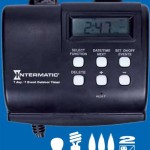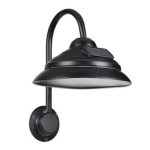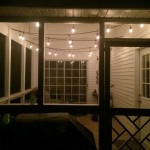Outdoor Hanging Lantern Ideas: Illuminating Your Outdoor Space
Outdoor hanging lanterns have become a popular choice for homeowners seeking to enhance the ambiance and functionality of their outdoor spaces. These versatile lighting fixtures not only provide illumination but also contribute to the aesthetic appeal of patios, gardens, porches, and walkways. The wide variety of styles, materials, and power sources available allows for customization to suit individual tastes and specific outdoor environments. This article explores several outdoor hanging lantern ideas, outlining key considerations for selection and installation, ensuring a well-lit and visually appealing outdoor area.
Types of Outdoor Hanging Lanterns
The market offers a diverse range of outdoor hanging lanterns, each possessing unique characteristics and advantages. Understanding these types is crucial for making an informed decision that aligns with both functional needs and aesthetic preferences.
Electric Lanterns: These lanterns are powered by electricity, typically hardwired into the existing electrical system or plugged into an outdoor outlet. Hardwired electric lanterns offer a permanent lighting solution, often controlled by a switch inside the house. Plug-in electric lanterns, on the other hand, provide flexibility and ease of installation, suitable for temporary or seasonal use. Electric lanterns generally provide a consistent and reliable light source, making them appropriate for areas requiring regular illumination.
Solar Lanterns: Solar-powered lanterns utilize photovoltaic cells to convert sunlight into electricity, which is then stored in a rechargeable battery. These lanterns are environmentally friendly and require no external power source, making them ideal for locations where wiring would be difficult or costly. Solar lanterns are easy to install, simply needing a sunny location to recharge. However, their performance can be affected by weather conditions, with reduced brightness or shorter operating times on cloudy days.
Gas Lanterns: Gas lanterns, fueled by propane or natural gas, provide a warm and inviting glow. These lanterns are often chosen for their traditional aesthetic and are particularly suitable for creating a rustic or vintage atmosphere. Gas lanterns require professional installation to ensure safe and proper connection to the gas line. They also necessitate regular maintenance to prevent leaks and ensure optimal performance.
Candle Lanterns: Candle lanterns rely on candles for their illumination, offering a charming and romantic ambiance. These lanterns are typically made of metal or glass and provide a soft, flicker light. Candle lanterns are best suited for creating a decorative accent or for use in areas where a low level of light is desired. Safety is a primary consideration when using candle lanterns, requiring careful placement to prevent fire hazards and monitoring to ensure the candle does not burn down completely.
Battery-Operated Lanterns: These lanterns use batteries as their power source. They offer the advantage of portability and can be easily moved from one location to another. Battery-operated lanterns are suitable for temporary lighting needs or for areas where access to electricity is limited. The lifespan of the batteries will vary depending on the type of lantern and the frequency of use.
Factors to Consider When Choosing Outdoor Hanging Lanterns
Selecting the right outdoor hanging lantern involves careful consideration of several key factors to ensure both functionality and aesthetic appeal. These factors include material, size, style, light output, and weather resistance.
Material: The material of the lantern significantly impacts its durability and aesthetic. Common materials include metal, glass, and plastic. Metal lanterns, such as those made of wrought iron or stainless steel, are known for their strength and resistance to rust. Glass lanterns offer a classic and elegant look, while plastic lanterns are lightweight and more affordable. The choice of material should be based on the local climate and the desired aesthetic.
Size: The size of the lantern should be proportional to the space where it will be hung. A small lantern may be overwhelmed in a large area, while a large lantern may appear too imposing in a small space. Consider the height of the ceiling or overhang and the overall scale of the outdoor area when selecting the size of the lantern.
Style: Outdoor hanging lanterns are available in a wide range of styles, from traditional to modern. Choose a style that complements the architectural design of the house and the overall aesthetic of the outdoor space. Traditional lanterns often feature ornate details and classic shapes, while modern lanterns tend to have clean lines and minimalist designs. Consider the color and finish of the lantern to ensure it blends well with the surrounding decor.
Light Output: The amount of light provided by the lantern is an important consideration. The light output is typically measured in lumens. Determine the level of illumination required for the specific area based on its intended use. For example, a walkway may only need a low level of light for safety, while a patio or deck may require brighter light for entertaining.
Weather Resistance: Outdoor lanterns must be able to withstand the elements. Look for lanterns that are specifically designed for outdoor use and are labeled as weather-resistant or waterproof. These lanterns are typically made of durable materials and have sealed components to protect against moisture, dust, and corrosion. Consider the specific weather conditions in the area, such as heavy rain, snow, or strong winds, when selecting a lantern.
Cost: The price of outdoor hanging lanterns can vary widely depending on the material, size, style, and features. Set a budget before beginning the selection process and compare prices from different retailers to find the best value. Consider the long-term cost of operating the lantern, including the cost of electricity, gas, or batteries.
Installation and Placement of Outdoor Hanging Lanterns
Proper installation and placement of outdoor hanging lanterns are essential for ensuring both safety and optimal performance. Carefully planning the location and following the appropriate installation procedures will help to maximize the benefits of these lighting fixtures.
Location: Choose locations that will provide effective illumination and enhance the aesthetics of the outdoor space. Common locations for hanging lanterns include porches, patios, decks, walkways, and gardens. Consider the purpose of the area and the desired level of illumination when selecting the location. For example, lanterns placed near doorways or steps can improve safety, while lanterns hung in a garden can create a relaxing and inviting atmosphere.
Height: The height at which the lantern is hung is another important consideration. Generally, lanterns should be hung high enough to avoid obstructing views or causing a hazard. For porches and patios, a height of 7 to 8 feet is typically recommended. For walkways, lanterns can be hung lower, but should still be high enough to avoid being accidentally bumped or knocked over.
Spacing: When installing multiple lanterns, consider the spacing between them to ensure even illumination. The appropriate spacing will depend on the size and light output of the lanterns, as well as the size of the area being illuminated. As a general rule, lanterns should be spaced evenly and should overlap slightly to create a continuous band of light.
Wiring: If installing electric lanterns, follow all local electrical codes and safety regulations. If hardwiring the lanterns, it is recommended to hire a qualified electrician to ensure the work is done safely and correctly. If using plug-in electric lanterns, ensure that the outlet is properly grounded and protected from the elements. When working with electricity, always turn off the power at the breaker box before beginning any work.
Mounting: Ensure that the lantern is securely mounted to the ceiling or overhang. Use appropriate hardware, such as hooks or chains, that are designed to support the weight of the lantern. If hanging the lantern from a wooden structure, use screws or nails that are long enough to penetrate the wood securely. If hanging the lantern from a concrete or brick structure, use anchors or expansion bolts.
Safety: Prioritize safety when installing and using outdoor hanging lanterns. Keep lanterns away from flammable materials, such as curtains or plants. Regularly inspect the lanterns for any signs of damage or wear, such as cracked glass or frayed wires. Replace any damaged parts immediately. If using candle lanterns, never leave them unattended and always extinguish the candles before leaving the area.
By carefully considering the type of lantern, the factors influencing selection, and the installation process, homeowners can create a well-lit and visually appealing outdoor space that enhances their enjoyment of their property. The options are vast, allowing for personal expression and functional improvement.

28 Backyard Lighting Ideas How To Hang Outdoor String Lights

Summer Outdoor Lighting Ideas Contemporary Design Diy

20 Amazing Outdoor Lighting Ideas For A Shabby Chic Garden

30 Best String Lights Outdoor Ideas For A Beautiful Backyard

32 Gorgeous And Creative Ideas For Decorating With Lanterns Outdoor Wedding Decorations Lantern Decor Rustic

13 Backyard String Light Ideas That Are Stunning Bob Vila

25 Outdoor Lantern Lighting Ideas That Dazzle And Amaze Decoist

8 Pergola Gazebo Outdoor Lighting Ideas

25 Outdoor Lantern Lighting Ideas That Dazzle And Amaze Decoist

Create A Secret Garden With Hanging Tree Lights
Related Posts







